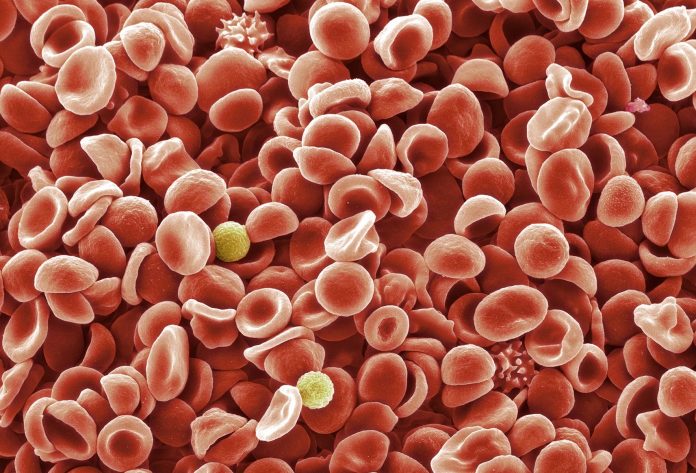
Researchers at the University of Maryland School of Medicine (UMSOM) and their Wake Forest University (WFU) colleagues have discovered that a compound known as ferroheme can bind and distribute nitric oxide (NO) throughout the vascular system, enabling regulation of blood flow, blood pressure and other signaling processes involved in healing blood vessels.
Heme is an iron-containing compound abundant in circulation and our cells, well known for its involvement in cardiovascular processes including oxygen transport and storage in the blood. However, the compound is also a common signaling target for NO—a vital molecule for several signaling pathways including regulation of blood pressure and platelet aggregation.
Despite NOs involvement in cardiovascular health, the underlying mechanisms behind its movement from blood to signaling targets in the blood vessel wall have remained unknown. Reporting in Nature Chemical Biology, scientists have now characterized the formation of a stable NO intermediary known as NO-ferroheme. After injection in animal models, NO-ferroheme was transported in blood, travelling to blood vessels causing them to dilate and lower blood pressure.
“We know that nitric oxide—with its extremely short half-life of less than a second in blood —must have a way of moving through the bloodstream and into blood vessels via a stable mechanism,” said Anthony DeMartino, PhD, assistant professor of medicine at UMSOM and lead author of the study.
“We worked out the chemistry and the kinetics of how NO-ferroheme is physiologically generated in the test tube, and then demonstrated how it works in an animal model, which provides strong evidence of our hypothesis.”
In order to conduct their studies, the researchers used the NO signaling target properties of heme by mixing its oxidized version with NO as well as the antioxidant glutathione. According to the scientists, the presence of the antioxidant caused NO to rapidly react and bind to the heme compound forming the stable NO-ferroheme intermediate. Apart from having blood pressure lowering effects in animals, the compound also inhibited platelet aggregation in human blood platelet samples.
“My laboratory has worked for more than two decades trying to understand how NO can diffuse in blood and in cells without being destroyed by reactions with other radicals and heme bound proteins like hemoglobin and myoglobin. The stabilization of NO by forming NO-ferroheme allows it to diffuse across distances, almost like a chemical flying saucer, to directly bind to and activate target enzymes that control blood flow,” explained Mark Gladwin, UMSOM dean and senior author of the study.
According to the researchers, uncovering the NO-ferroheme compound as a biological “middleman” is an important step towards further understanding NO signaling mechanisms in cardiovascular health. The research team next wants to further investigate the use of NO-ferroheme as a potential therapeutic treating damage to blood vessels.
“One of the most surprising things that came out of our study was the role of the glutathione; both in the novel chemistry in forming the NO ferroheme and in its effects in vivo,” concluded Dany Kim-Shapiro, professor and chair of the department of physics at WFU and co-senior author of the study in a press statement. “We still have a lot more work to do to fully understand this.”











